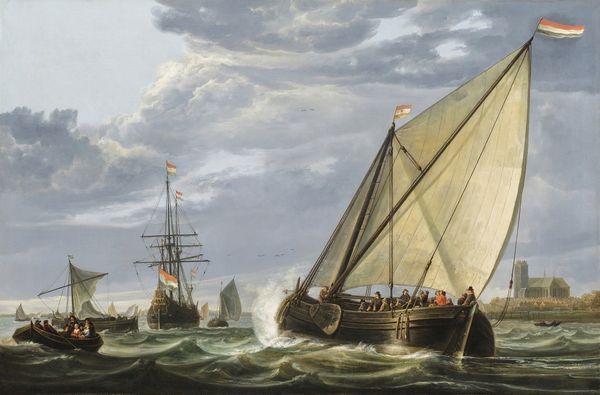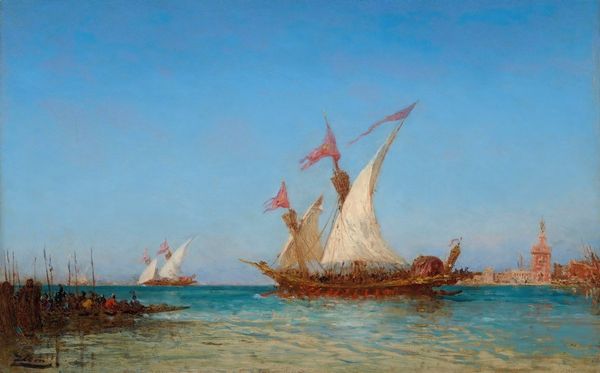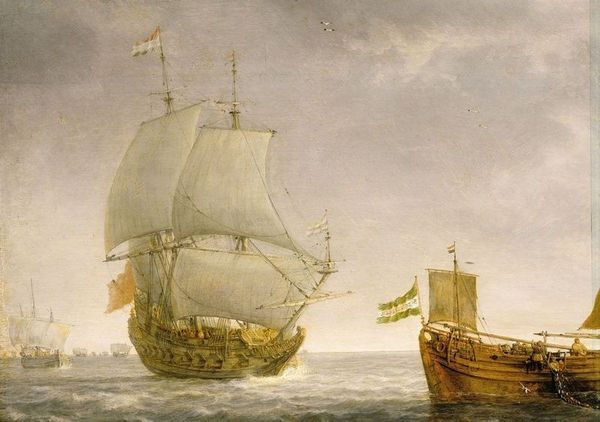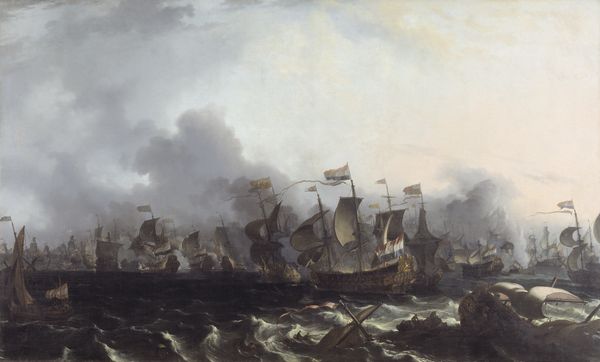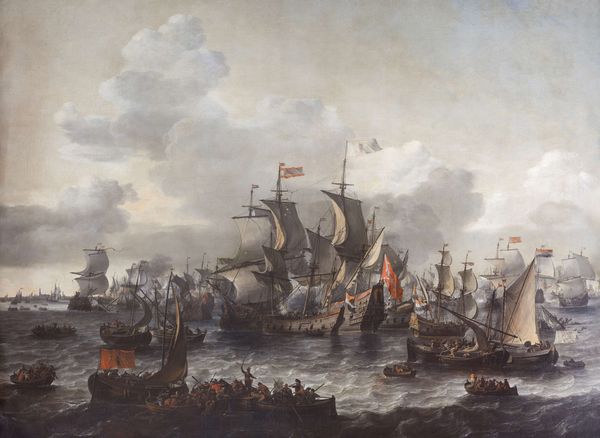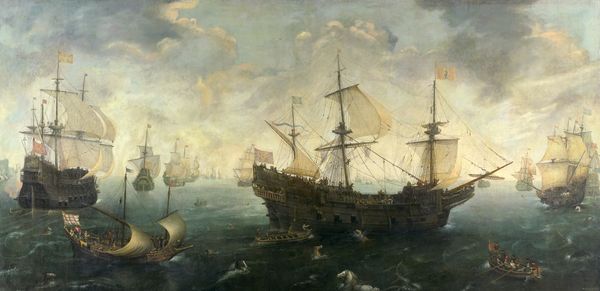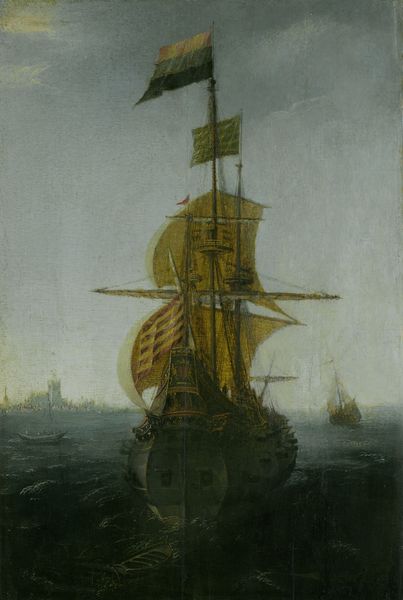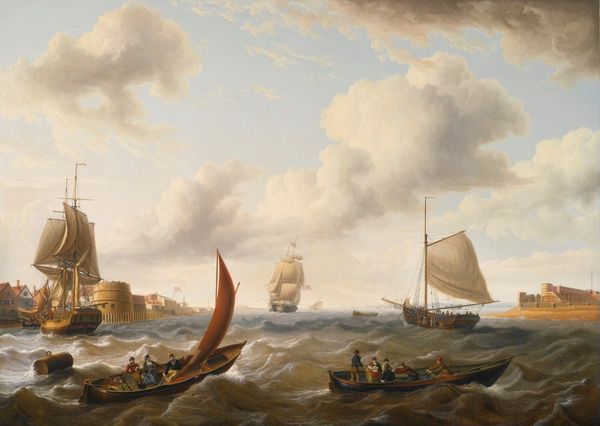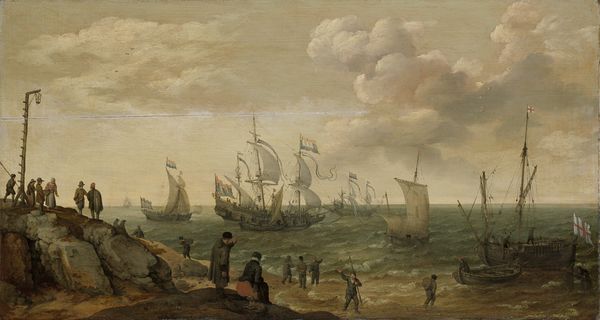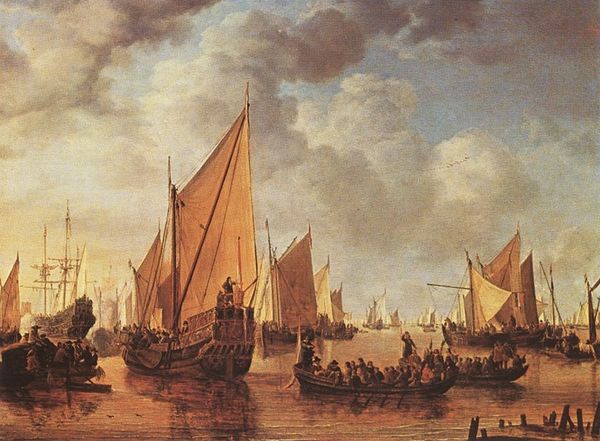
Copyright: Public Domain: Artvee
Curator: Look at the effervescence captured in Félix Ziem’s “Coup de canon à Venise, jour de fête,” painted in 1888. A cannon shot explodes near a Venetian ship on what seems to be a festive day. What do you think strikes you most immediately? Editor: It's definitely the dynamism. There's a visual cacophony, with all the bright sky that clashes wonderfully with the dark earth, and those brilliant flags snapping atop the boats! It evokes such a celebratory energy. I wonder, though, what “fête” we’re meant to be seeing here. Curator: The scene offers an interesting window into Venice’s complex political and cultural history. Venice, by this time, was well-integrated into the Kingdom of Italy, yet it retained this allure as a site for pageantry. The explosion could represent a rupture, a forceful reminder of changing times, yet framed within tradition. How does Ziem balance these competing historical narratives? Editor: Precisely! It feels self-conscious in that way. The loose, impressionistic style—the blurring of figures—almost implies a critique of idealized history painting. Is Ziem inviting us to consider who benefits from such spectacles, and whose narratives are suppressed in the process? Look at how the masses are painted in broad strokes in the foreground. Curator: Indeed. The impressionistic handling suggests the fleeting nature of spectacle itself, and who participates, but I wonder if we're not pushing too much, or making too much out of his style. Still, even within a "festive" context, we can consider Ziem’s position as an artist embedded in specific social dynamics. His perspective is crucial in unpacking the power relations inherent in this seemingly benign depiction. Editor: I suppose what draws me is that it prompts a reflection beyond just a historical event, leading us to interrogate the ongoing performance of national identity in the city, the legacy of Venetian artistry, and how it is portrayed through the artist’s brush. It's about challenging idealized representations, understanding what purpose art serves when used for propaganda, even accidentally.
Comments
No comments
Be the first to comment and join the conversation on the ultimate creative platform.
